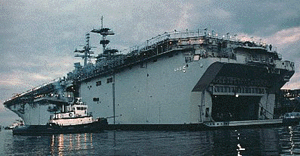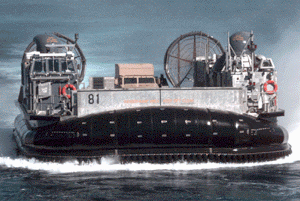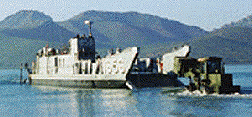- Air Force
- Marines
- Army
- Navy
Small Arms
- Machine Guns
- Hand Guns
- Grenades
- Shotguns
Naval Ships
- Submarines
- Transport
- Carriers
- Attack
Aerial
- Helicopters
- Airplanes
- Missiles
Snipers
- Weapons
- Mission
Vehicles
- Light Assault
- Transport
- Tanks
Nuclear
- NORAD
- Policy
![]() Naval Transport
Naval Transport ![]()
|
Primary landing ships resemble small aircraft carriers and are designed to put troops on hostile shores and carry support vessels. They perform as primary landing ships for assault operations of Marine expeditionary units. These ships use Landing Craft Air Cushion, conventional landing craft, and helicopters to move Marine assault forces ashore. In a secondary role, using AV-8B Harrier aircraft and anti-submarine helicopters, these ships perform sea control and limited power projection missions. |
|
The landing craft air cushion (LCAC) is a high speed, over-the-beach, fully amphibious landing craft capable of carrying a 60-75 ton payload. It is used to transport weapon systems, equipment, cargo, and personnel from ship to shore and across the beach. The advantages of air cushion landing craft are numerous. They can carry heavy payloads, such as an M-1 tank, at high speeds. Their payload and speed mean more forces reach the shore in a shorter time, with shorter intervals between trips. The air cushion allows this vehicle to reach more than 70 percent of the world's coastline, while conventional landing craft can land at only 15 percent of the coasts. |
|
Landing craft are capable of transporting tracked or wheeled vehicles and troops from amphibious assault ships to beachheads or piers. LCU's have both bow and stern ramps for onload/offload at either end and may carry 170 tons of cargo. These crafts carry more cargo than the LCAC, but are more vulnerable, slower, and may not reach the same locations. They have two 12.7 mm MG's for their protection and force protection. |


